DENTAL BRIDGE
Upgrade Your Smile
To Perfection!
Discover our Dental Bridge Services!
What Is A Dental Bridge
A dental bridge is a type of dental restoration that involves the use of an artificial tooth, also known as a pontic, to fill a gap in your mouth that’s been left by a missing tooth. The pontic is held in place by dental crowns that are placed on the natural teeth or implants on either side of the gap. There are several types of bridges, including traditional, cantilever, Maryland, and implant-supported bridges. The type of dental bridge a dentist recommends will depend on the location of the missing tooth (or teeth) and the health of your mouth. While they not only improve your smile, dental bridges also help maintain your face shape, prevent remaining teeth from shifting, and assist with chewing and speaking.
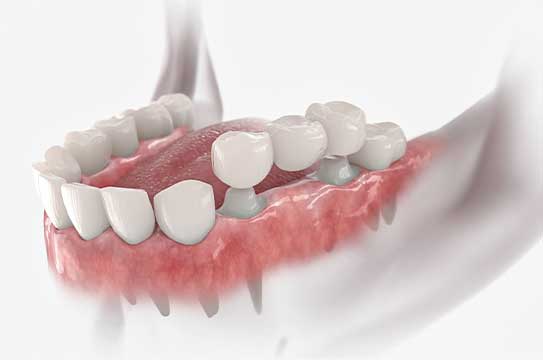
Types of Dental Bridges
There are four main types of dental bridges, each with its unique characteristics and application. Understanding these different types will allow you to make an informed decision when choosing the best solution for your needs.
BRIDGE FOR DENTAL
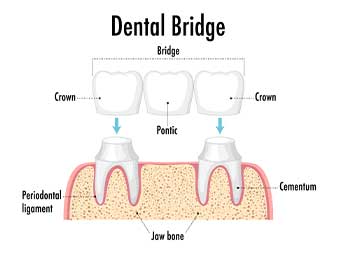
Traditional Dental Bridges
Traditional dental bridges are the most common type of bridge used to replace missing teeth. They consist of one or more false teeth, called pontics, which are held in place by dental crowns. The dental crowns are cemented onto the teeth on either side of the gap, creating a strong and stable anchor for the pontic.
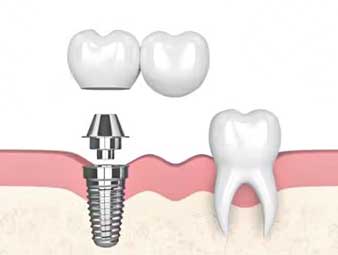
Cantilever Dental Bridges
Cantilever dental bridges are similar to traditional bridges, but they require only one dental crown for support. This type of bridge is used when there are no teeth on one side of the gap, relying on a single, healthy anchor tooth for support. Due to the additional pressure placed on the supporting tooth, cantilever bridges may not be suitable for areas with heavy chewing forces, such as the back molars

Maryland Dental Bridges
Maryland dental bridges consist of a pontic held in place by a metal or porcelain framework that is bonded to the back of the adjacent teeth. This type of bridge does not require the removal of any tooth enamel, making it a minimally invasive option compared to traditional bridges. However, the strength of Maryland bridges is relatively lower, making them less suitable for replacing molars.
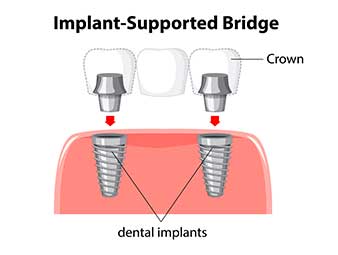
Implant-Supported Dental Bridges
Implant-supported dental bridges use dental implants, rather than dental crowns or frameworks, to hold the pontics in place. Each missing tooth is replaced by a separate dental implant, providing a stable and long-lasting solution. Implant-supported bridges require a sufficient amount of healthy jawbone for successful implant placement.
Desire to craft The Perfect Smile as you wonder, how do I find great ...
DENTAL BRIDGES NEAR ME
Glenn Smile Center Has You Covered!
Advantages of Dental Bridges
There are four main types of dental bridges, each with its unique characteristics and application. Understanding these different types will allow you to make an informed decision when choosing the best solution for your needs.
TOOTH BRIDGE

Restores function and appearance
Dental bridges can effectively restore the function of your bite and the appearance of your smile, allowing you to eat, speak, and smile with confidence.
Prevents Shifting of Teeth
Implant-supported dental bridges use dental implants, rather than dental crowns or frameworks, to hold the pontics in place.
Distributes Biting Forces Evenly
Dental bridges help to distribute the force of your bite evenly, reducing the strain on your natural teeth and potentially preventing future dental problems.
Maintains Facial Shape
By replacing missing teeth, a dental bridge helps to maintain the shape and structure of your face, preventing the sunken appearance that can come with tooth loss.
Relatively Quick and Straightforward Procedure
Traditional, cantilever, and Maryland dental bridges generally require only two dental appointments, making them a quicker solution than dental implants.
The Dental Bridge Procedure
The dental bridge procedure typically involves the following steps:
BRIDGE FOR TEETH
Initial consultation
During the initial consultation, your dentist will determine if a dental bridge is the best solution for your missing teeth and will recommend the most suitable type.
Preparation of Adjacent Teeth
Your dentist will prepare the adjacent teeth by removing some of the tooth structure to accommodate dental crowns.
Impressions And Temporary Bridge
Impressions of your teeth will be taken and sent to a dental laboratory for bridge fabrication. A temporary dental bridge may be placed to protect the prepared teeth in the meantime.
Placement Of The Dental Bridge
Once the permanent dental bridge is ready, your dentist will fit it and make any necessary adjustments to ensure a proper fit and comfortable bite.
Restores function and appearance
Your dentist may schedule a follow-up appointment to check on the health of your teeth, gums, and bridge, ensuring everything is functioning well.
Searching for the optimal solution to rejuvenate your smile?
BRIDGES TEETH

Contact Glenn Smile Center at once if you need....
BRIDGE DENTAL WORK
BRIDGE TEETH
BRIDGE TOOTH
BRIDGES FOR TEETH
TEETH BRIDGES
BRIDGEWORK

Call Glenn Smile Center immediately if you need a…
DENTAL BRIDGE PROCEDURE
TEETH BRIDGE
BRIDGED TOOTH
FRONT DENTAL BRIDGE
BRIDGE IN MOUTH
SINGLE TOOTH BRIDGE

Or Thinking?
How Do I Find Great…
BRIDGE WORK ON TEETH
DENTAL BRIDGES DENVER CO
DENTAL BRIDGES AURORA CO
FIXED BRIDGE TEETH
TOOTH BRIDGES
FIXED BRIDGE
Connect with Our Trusted Dental Professionals Today!
(303) 751-6916
Caring For Your Dental Bridge
To ensure the longevity of your dental bridge, follow these care tips
DENTAL BRIDGES
Maintain Good Oral Hygiene
Brush your teeth twice a day and floss daily to keep your teeth, gums, and bridge clean.
Use A Floss Threader Or Water Flosse
These tools can help you clean under and around your dental bridge, preventing the buildup of bacteria and debris.


Visit Your Dentist Regularly
Regular dental check-ups and cleanings are essential to maintaining the health of your teeth, gums, and bridge.
Avoid Chewing Hard Food
Chewing on hard foods can potentially damage your dental bridge and the supporting teeth, so avoid these foods whenever possible.
Wear A Mouthguard If Needed
If you grind your teeth at night, wearing a mouthguard can help protect your dental bridge from excessive pressure and damage.
Comparison Between Dental Bridges & Other Tooth Replacement
If your dental bridge feels loose, it is important to address the issue as soon as possible to prevent further damage or discomfort. While it is recommended to visit a dentist for a professional assessment and repair, there are a few steps you can take at home to temporarily fix a loose dental bridge.
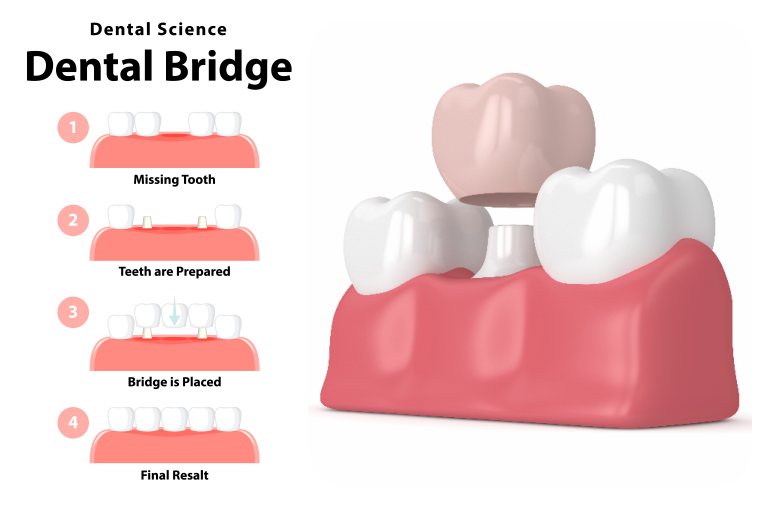
BRIDGE VS CROWN
When evaluating options for tooth replacement, understanding the differences between Dental Bridges and Implants is key. Equally purposed to replace missing teeth, they differ in techniques, lifespan, and effects on adjacent teeth. The Dental Bridge procedure entails devising a 'bridge', a false tooth held secure by crowns bonded to teeth on both sides. Conversely, a Dental Implant, encompassing a much more comprehensive tooth replacement, demands the surgical placement of a titanium post into the jawbone. A dental crown fixed to this post replicates the entire tooth, root included. While Dental Bridges provide an expedient, less invasive alternative, Dental Implants are generally more durable and advantageous in maintaining the health of neighboring teeth.
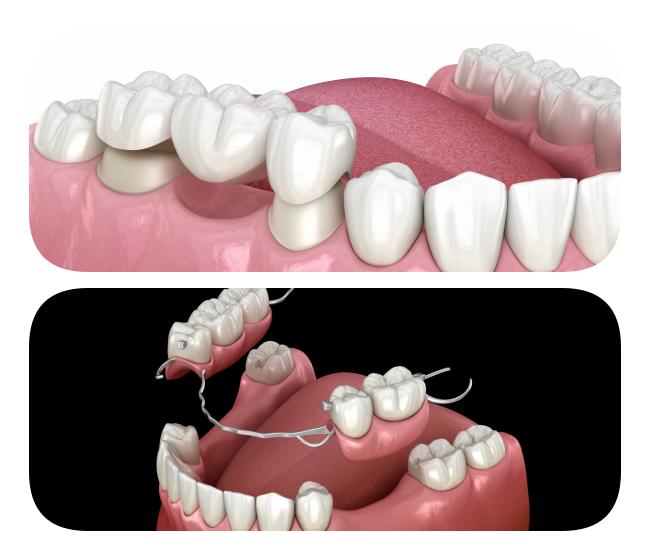
BRIDGE VS PARTIAL
Dental bridges and dentures are two common dental solutions employed to replace missing teeth. Both work differently. A dental bridge, a permanently fixed prosthetic, is often used when there is a loss of one or two teeth, cemented securely to neighboring teeth or implants. Dentures, however, are removable substitutes for a larger group of missing teeth, or a complete row. They come in two varieties: full dentures for complete tooth loss and partial ones when some teeth still remain. Bridges offer a natural feel and don't need removing for cleaning, also preventing teeth from drifting. But these require the good health of adjacent teeth. Contrarily, dentures, notwithstanding can become loose and need careful cleaning, promote speech and chewing abilities, and are less costly. They're ideal when the remaining teeth aren't adequate for a bridge.
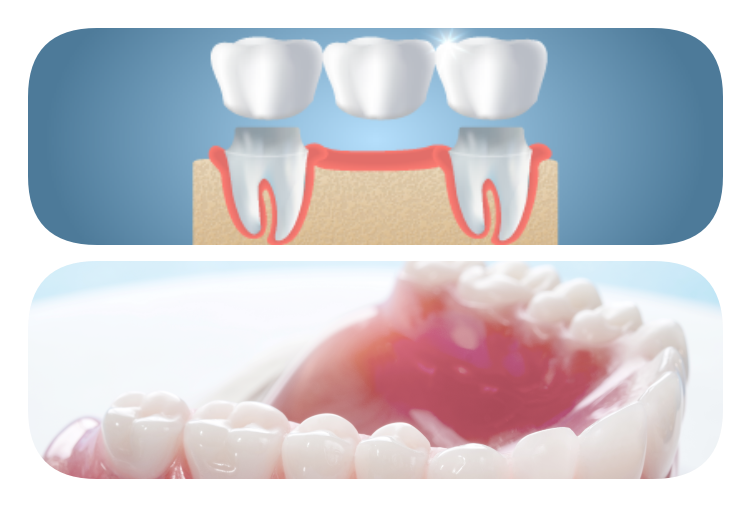
BRIDGE VS DENTURE
Dental bridges and dentures are two common dental solutions employed to replace missing teeth. Both work differently. A dental bridge, a permanently fixed prosthetic, is often used when there is a loss of one or two teeth, cemented securely to neighboring teeth or implants. Dentures, however, are removable substitutes for a larger group of missing teeth, or a complete row. They come in two varieties: full dentures for complete tooth loss and partial ones when some teeth still remain. Bridges offer a natural feel and don't need removing for cleaning, also preventing teeth from drifting. But these require the good health of adjacent teeth. Contrarily, dentures, notwithstanding can become loose and need careful cleaning, promote speech and chewing abilities, and are less costly. They're ideal when the remaining teeth aren't adequate for a bridge.

How much is a dental bridge?
The price of a dental bridge can vary widely based on the size of the gap, procedural complexity, material choice, and dentist fees. Insurance options can also impact final costs to patients. To get an exact quote, patients should speak with their dental provider about specific needs and insurance contributions.
GLENN SMILE CENTER
2675 S Abilene St Suite 135
Aurora, CO 80014
(303) 751-6916
Table of Contents
Toggle